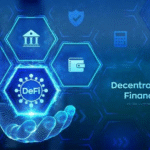Sustainable finance is no longer a niche trend — it’s becoming mainstream DNA for investors, companies, and regulators alike. Whether you’re issuing a bond, extending a loan, or structuring a derivative, ESG-linked finance ensures your capital aligns with meaningful environmental, social, and governance goals.
-
What Is ESG‑Linked Finance?
🔸 Financial Products Tied to ESG Outcomes
ESG-linked finance includes instruments like green bonds, sustainability-linked loans (SLLs), and sustainability-linked bonds (SLBs). Unlike traditional debt, these are structured with contractual Key Performance Indicators (KPIs) and Sustainability Performance Targets (SPTs). If the borrower misses the targets, interest costs typically rise, incentivizing real ESG improvements.
🔸 Different From Green Bonds
Green bonds use their proceeds specifically to fund environmentally positive projects. ESG-linked finance, in contrast, ties the borrower’s behavior (like emissions reduction or social initiatives) to financial terms — making it broader but potentially more impact-driven.
-
Why It Matters: Beyond “Something Nice”
🔸 Capital and Accountability in One Package
This type of finance offers both cheap access to capital and a real push toward sustainability. Lenders and investors have leverage — miss your ESG marks, and pay more. It’s not optional green symbolism; it’s real financial skin in the game.
🔸 Investor Trust & Reputation at Stake
Corporations and governments issuing ESG-linked finance can visibly signal commitment to ESG goals. But sloppy targets or weak disclosure lead to greenwashing risk — hurting reputation and investor confidence.
-
Key Elements: The SLB & SLL Framework
🔸 KPI + SPT Selection Must Be Real
For example, a company may commit to reducing carbon emissions or improving gender diversity. These targets must be material, measurable, and benchmarked — not soft or vague. Independent third-party verification is essential.
🔸 Financial Penalties for Missed Targets
If a borrower misses its goals — say cutting emissions by 20% — the bond coupon may step up by 25 basis points. This financial consequence ensures targets are taken seriously.
🔸 Transparent Reporting and Verification
Issuers must publish annual updates on progress and verification reports from credible external entities — all essential to prevent skepticism and maintain investor trust.
-
Current Trends & Scale of Growth
🔸 Surging Issuance Despite Scrutiny
Green bonds remain the bulk of sustainable debt, expected to exceed $500 bn in 2024 growth. Meanwhile, KPI-linked debt and transition bonds are gaining traction, especially in sectors decarbonizing hard-to-abate industries.
🔸 SLBs and SLLs Grew Explosively, but Faced a Backlash
SLL issuance surged from $6 bn in 2016 to over $322 bn by 2021. But by 2023–24 the growth slowed sharply, as regulators and investors voiced concerns over weak disclosure and token ESG targets.
-
Critics Warn of Greenwashing
🔸 Borrowers Getting ESG Loans While Polluting
Some of the biggest SLL issuers include fossil fuel companies with limited sustainability mandates — raising questions about actual impact versus marketing optics.
🔸 Disclosure Quality is Often Lacking
Studies show firms with weak contractual disclosure often see ESG ratings slide post-issuance — suggesting many targets are declared but not acted on. Investors only respond positively when target transparency is high.
-
Regulatory & Institutional Action: Clearing the Fog
🔸 Sebi Tightens ESG Debt Rules in India
Since June 2025, the Securities and Exchange Board of India has rolled out a framework regulating social, sustainability, and ESG-linked bonds—aimed at preventing “purpose‑washing” and improving accountability.
🔸 India’s RBI Requires Climate Risk Disclosure
Starting FY2027 (voluntary), mandatory by FY2028 — Indian banks will need to stress test for climate risks, disclose financed emissions, and report mitigation strategies. This will likely reshape lending terms and pricing.
-
ESG‑Linked Finance in Action: Real‑World Innovations
🔸 AI and Sustainability Metrics
Platforms using AI, big data, and satellite imagery are verifying ESG performance in near real-time. This tech helps lenders track emissions reduction progress, social milestones, and governance performance accurately.
🔸 Finance Supporting Green Housing in India
IIFL Home Finance raised $100 M from AIIB to support eco-friendly affordable housing loans aligned with India’s PMAY goals — a prime example of ESG finance at work.
-
Challenges & What Lies Ahead
🔸 Standardizing ESG Metrics Globally
Without harmonized benchmarks, comparing SLBs or SLLs across issuers is messy. Calls for global common frameworks — like EU Taxonomy or ISSB standards — are growing.
🔸 Avoiding Greenzoning: Real Over Rhetoric
Market viability depends on ESG-linked instruments that deliver measurable change. Otherwise, borrowers may treat sustainability as semantics, undermining entire models.
🔸 Emerging Tools: ESG-Linked Derivatives
Interest rate swaps, CDS, and options now anchor to ESG indices, enabling companies to hedge or invest based on sustainability performance — widening the ESG toolkit.
-
Conclusion: ESG Finance Isn’t Optional, It’s Inevitable
Sustainable & ESG‑linked finance is rapidly evolving into an essential pillar of modern capital markets. Investors and companies can no longer treat ESG as an afterthought. But real progress requires concrete targets, clear disclosure, independent verification, and educated scrutiny to avoid hybrid instruments becoming hollow signals.
Whether you’re a policymaker, lender, issuer, or investor — understanding the mechanisms and pitfalls of ESG-linked finance is non-negotiable for navigating the future of capital markets responsibly.




